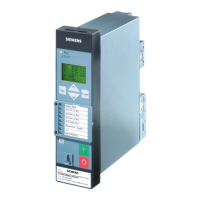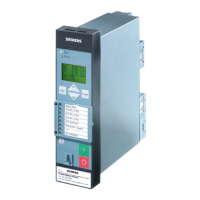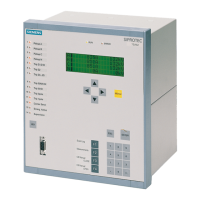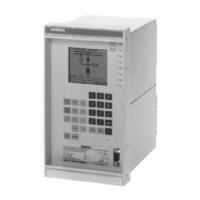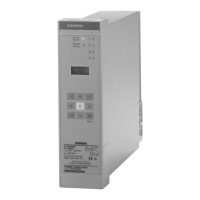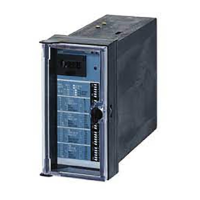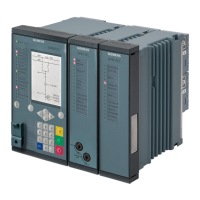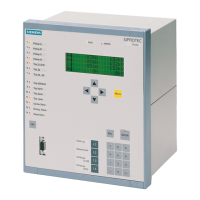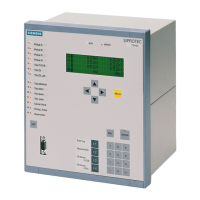'(& )( )'& &) ( &!& ")& &$(( $# Ć %&( $# #)" &&#$
7 - 7
Siemens AG ⋅ May 1998
After entering the password "321", followed by the
"ENTER"-key, start of the monitor-function is confirĆ
med after depressing key "F2". Depressing key "1"
starts read out of the fault buffer. Consecutive deĆ
pressing of key "1" indicates always the next of the
up to 20 status events.
02.00 0000 0000 0000
00 000000000
Display
Operation via DIGSI displays all 20 status events on
the screen after entering the key sequence XFO.
Meaning of the display:
aa.bb cccc dddd eeee
ff ggggggggg
abcdef g
SNR FNR TNR F1F2F3 RELZ
SNR Number of the status event
FNR Type of failure
TNR Task number
F
1 Failure information 1
F
2 Failure information 2
F
3 Failure information 3
RELZ Relative time in milliseconds
The first event which will be read out, is the most
recent system event. In most cases this is the inforĆ
mation that the protection has attempted the third
restart. The cause for this event can be found in the
following events which are read out.
These events were written previously as can be seen
from the relative time tag.
Leaving the fault buffer is possible by the combination
of keys "CTRL + Z" in DIGSI ("emulation keypad") or
on the keypad itself by depressing the "ESC"-key
twice.
In most cases, disturbances occuring out of an operaĆ
tional situation, can be eliminated by replacing moduĆ
les.
Table 7.5 shows a list of some typical status events
from the fault buffer, which help the operation perĆ
sonnel in locating the fault cause.
If the fault cannot be clearly identified, then the conĆ
tents of the fault buffer should be sent to the manuĆ
facturer. After saving the status events, a new restart
may be attempted by switching OFF and ON the maĆ
ster unit. This cancels all information in the fault bufĆ
fer. (The no-voltage status should last >30 s in order
to guarantee erasure of the fault record buffer conĆ
tents.)
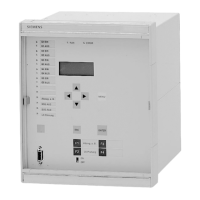
